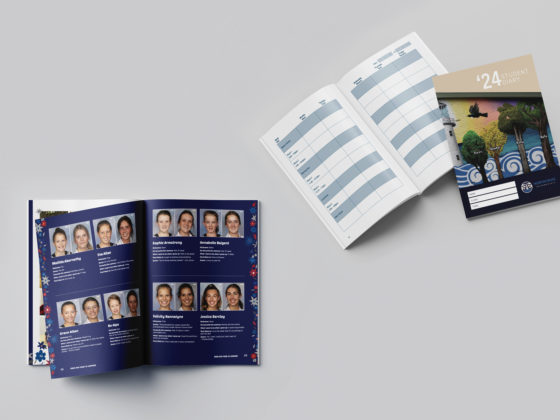Nobody likes spotting errors and inconsistencies when it’s too late to fix them. In sizeable publications like school yearbooks and leavers books, it’s easy for mistakes to get past even the keenest of editors! To help you create an error-free book, here are some common grammar and style mistakes that tend to pop up in school publications that are worth giving the double-check!
Common Grammar Mistakes
Incorrect Apostrophes: These can be tricky to get right, so they are worth triple checking. Pay special attention to how year group names are styled: e.g. Year 10s versus Year 10’s. Unless showing ownership, the apostrophe isn’t needed, but some schools prefer it visually. Regardless of your stylistic choice, make sure it is consistent throughout the book.
Misusing Hyphens & Dashes: It can be hard to spot the difference between a hyphen (-) and a dash (–), and some fonts can make it even trickier to tell them apart! Check that both are used correctly, and that spacing is consistent: e.g. 10-12 versus 10 – 12.
Forgotten Accent Marks: Many Māori words, and words we borrow from other languages, have letters with accent marks. In informal writing, it’s common for some accents to be left out, so you’re likely to have some variability before editing. Check the names of locations, students, school groups and competitive houses.
Double Spaces: A common but sneaky error is double spaces at the beginning of sentences. The earlier you find and fix these, the better, as once the writing is laid out in your book, they get tricky to spot. If you find one double space in an article, there’s likely a few more hiding, so check closely!
Styling Inconsistencies
Language Preferences: Ensure all articles follow the same style of English. If one writer has their computer dictionary set to US English, there may be some Zs that need changing! It’s also worth checking that tone and formality doesn’t differ too much throughout. Of course, a message from the Principal will be more formal than a story from a student, but the book should flow and all stories should feel connected.
Dates & Times: Stories from school productions, sports events and camps will likely include dates and times. With a range of yearbook contributors comes a range of styling variations: 10am, 10:00AM or 10.00 am? January 5 or 5th of January?
Word Styling: Depending on your type of publication, there will be a few words that you’ll need to check for consistency. For school yearbooks, this includes event names, school productions, school terms, year groups and (unfortunately) COVID-19. Are these words capitalised, italicised or made bold?
And or &: Double-check your headings and subheadings to ensure that the styling of and or & is the same throughout your book.
Preferred Names: Some students birth names won’t match the name they typically use. Name variations are common with international students, who may have adopted an English name. Ensure each name has the same formatting throughout your book, so one student doesn’t have three different spellings! Also, decide how these names will be alphabetised – whether by birth name or preferred name.
Article Bylines: Check the formatting of each author’s name and ensure they are styled the same throughout your book. Check personal titles, capital letters, commas, colons and dashes!



